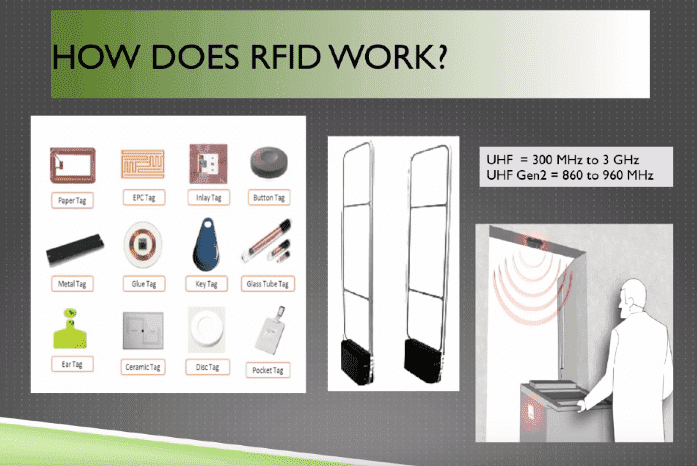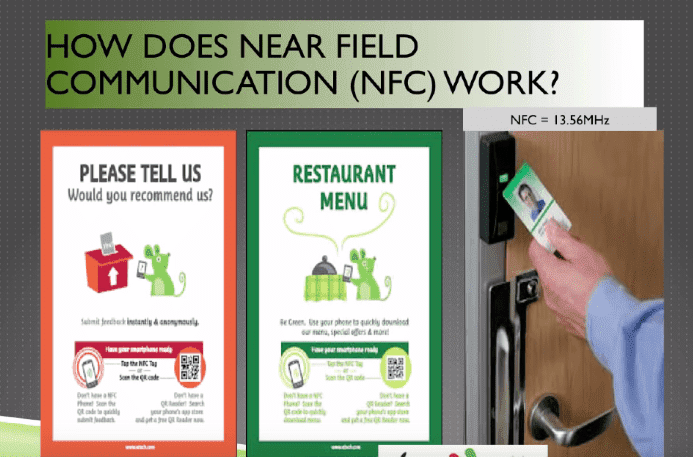RFID and NFC
Hi, welcome to our website, this article we will discuss the differences between RFID and NFC, if you’re not entirely sure what these acronym stand for that’s okay, just hang in there, and you will know after finish reading this article.
Clearly not all wireless is the same, just because a thing doesn’t require wires to do something doesn’t mean that they operate in the same frequency on the same channels use the same data transport mechanisms, and loosely described rfid and NFC could be called wireless technologies, because they all operate by sending data without using wires, but there’s a vast difference between the two different technologies, rfid is something you’ve definitely come across, you’ve come across the little inlay tags, the little white paper stickers that are placed inside DVDs or CDs, or any kind of merchandise that is in a store, and that’s an RFID solution to deter theft, the thing that you walk through when you come to a store, this big thing that may be covered up with advertising, these are everywhere in all retail environments, there is one these at the entrance and which is also the exit of the store, this could also be described as an RFID exciter, and i say that because this device here triggers the tag to send out a chirp, a beacon to react to being triggered, and that reaction that dates that sent from the tag when it is excited or triggered by this device here this R exciter, then is what turns on the alarm to let the cashier or the store security know that device has left the store that was not deactivated, meaning it’s probably something being stolen, so rfid tags can come in all different kinds of shapes and sizes, they can look like key tags, make a little B little glass tubes, they can look like employee badges and the types of devices that you’re going to come across most frequently are the passive rfid tags, passive rfid tags do not have a battery and they only have a single antenna, meaning they can only transmit data on a low frequency network. An active rfid tag typically has a battery and it typically has two antennas in it. One antenna would be triggered by and a doorway exciter to know the exact location of a tag devices that are tagged with active rfid tags are typically not 802.11 devices, in this example here we can see this cart has been tagged with an RFID tag, and as it passes through this doorway, this doorway has an installation of an RFID exciter so that this tag will send information when it passes through this exciter and that information from this are active rfid tag is sent across the 802.11 wireless network, so the tag is triggered on the low frequency.
Near field communication or NFC is a technology that just requires two devices to be within proximity of each other and to elaborate on this, if you’ve ever worked somewhere where you’ve had an employee badge that had a door lock system installed, so that you could use your badge to get in areas, maybe get into a data center, get into a building or a department of a building that is using NFC. You hold your badge near the proximity reader like you see in the photo, here to the right and either the door opens or it does not based upon entries in your database about whether or not the employee is allowed accessed or not allowed access into that area, that’s a very common NFC example that has been around for a really long time.
Near field communication operates over the 13.5 six megahertz frequency. The most recent uses of NFC have been the advancements that have been made through using Apple pay or google wallet or android pay with your smartphone, that is NFC enabled it has an NFC chip in it, therefore, you can use that smartphone to complete transactions and retail establishments much in the same way that you would just hold your employee badge up to the proximity card reader, the same type of technology, the use cases just a little bit different.
Active RFID tags are typically deployed to track expensive, non-wifi devices. Passive RFID tags are typically deployed to track inexpensive, non-wifi devices.
Near field technology is typically deployed to enable a cash payment at least nowadays, in previous iterations, the most common was to allow access to locked doors, so think Apple pay android pay, Google wallet, think proximity bad read badge readers, and think interactive signage in order to interact with the end user’s smartphone in a way that wasn’t typically available with just a simple two-dimensional sign.
Thank you for taking the time to read the article, I hope that it was helpful, hope that you learn something from it, thank you very much!








